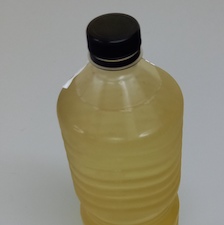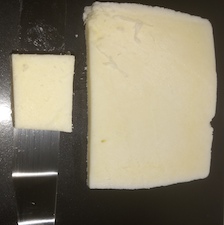Products
- Home
Products


Wine PDO Nemea
The wine PDO Nemea (EC 1234/2007), is produced only from fresh grapes of the red variety Agiorgitiko, a variety that has been cultivated for decades in Nemea region. For this reason, the Agiorgitiko variety used to be referred as "Black of Nemea". Agiorgitiko is considered one of the finest Greek red varieties and has been chosen as the "local ambassador variety" of the country. The grapes of the Agiorgitiko ripen and are harvested at the end of September. The wines are produced either by spontaneous fermentation or with the use of selected yeast strains. The final product is characterized by a deep full body with a lively red color (various shades), intense aromas of red fruit and/or spices, especially after aging in oak barrels.
The main category of PDO Nemea wines is the red dry wine, which is produced with the classic red winemaking method, where the alcoholic fermentation takes places at temperatures up to 30 °C. It has minimum natural, total and acquired alcoholic strength equal to 11% vol., maximum total sugar content 4 g/L, minimum total acidity (expressed as tartaric acid) 3,5 g/L, maximum volatile acidity (expressed as acetic acid) 1,2 g/L and maximum total sulfur dioxide content 150 mg/L. Also, there are the semi-sweet red wines, which are produced by stopping fermentation or by adding clarified or concentrated must to the wine. The last category is the red sweet wine (Vin doux), which are produced by adding ethanol of grape origin (alcohol content at least 95%) to the must, before the initiation of alcoholic fermentation.


Wine PDO Mantinia
The wine of the Mantinia region (grape varieties Moschofilero at least 85% and Asproudes) is a dry white wine and has been indicated as Protected Designation of Origin (PDO) (Official Government Gazette 224/A/26-10-2011). The PDO Mantinia wine zone is located in the Mantinia plateau with an average altitude of 660 m in the central eastern part of Arcadia. The recognition of the PDO Mantineia zone in 1971 is the result of the region's long-standing viticultural and winemaking tradition, which dates back to ancient times, as evidenced by a number of archaeological finds that connect the area with wine and the worship of the god Dionysus.
White wine PDO Mantinia belongs to the type I white wine category and according to legislation (EC 2018/C/302/10) is produced by the traditional white wine vinification procedure or the pre-fermentation extraction method. Then a static settling step follows, and inoculation occurs with pure selected yeasts, which ascribe specific organoleptic features. The temperature during alcoholic fermentation does not exceed 20 °C. The minimum total alcohol content is 11% vol., the amount of total sugars 0 – 4 g/L and 5 g/L minimum total acidity, expressed as tartaric acid. Its appearance is straw colored (pale yellow) with green highlights or deep yellow after aging. Its aroma is complex and intense bouquet with notes of fruits (mainly citrus) and flowers (rose, jasmine, etc.) typical of the grape varieties and dependent on the percentages of each one. Inorganic highlights appear during aging. Finally, wine PDO Mantinia is characterized by a balanced taste unique of the area, with a rich full body and a long aftertaste duration.


Traditional PDO cheese “Sfela”
Sfela is a traditional Greek brined cheese. It is typically presented in strips, from which it took the corresponding name, as “sfela” in Greek means strips. Concerning its characteristics, it is a white, semi-hard, skinless cheese with many small holes in its mass, with particular spicy taste and high salinity. The selected milk for its production is usually caprine or ovine milk, which can be either pasteurized or raw. The final product has a maximum humidity of 45%, the fat content cannot be lower than 40% on a dry basis, the salinity is around 4,7% and the protein content about 21-22%.
It has been recognized as Protected Designation of Origin (PDO) based on the Official Government Gazette 25/18.01.94, in which the region of origin is defined (Messinia and Laconia). It is clearly stated that the breeds of goats and sheep are exclusively pasture-raised with the flora of the same region. The addition of powder or condensed milk is strictly forbidden, while the addition of traditional rennet or enzymes is allowed in a proportional amount.
Commonly, the first step in the production of Sfela is the pasteurization of the milk, which takes place for 30 minutes at 63 °C or for 15 seconds at 72 °C. Following this, starter cultures are inoculated to aid fermentation. After that, the curd is separated and heated to 38–40 oC, under stirring. The curd is placed in cheesecloth to drain the whey and then is placed in a cheese rack where the curd forms a single mass after pressure. Then, the curd is cut into strips and dry salt is applied on the surface with final salinity between 1 to 4%. The storage and maturation are initially done at room temperature for 1 month in barrels or containers with brine 20 Be. Finally, the produced cheese is kept at 4–6 oC, where maturation continues for at least 3 months.


Pickled eggplant
Among the preservation methods of vegetables is pickling (“toursi”), which aims to the modification of the original characteristics of raw materials, but also to the extension of the shelf-life of the foods. The process of making pickles involves the immersion of vegetables in brine and then the spontaneous anaerobic fermentation through the indigenous microflora. The result of the fermentation by lactic acid bacteria is the production of metabolic products (e.g., lactic acid, acetic acid) resulting in a decrease in pH, the improvement of sensory properties, and the prevention of the growth of pathogenic bacteria.
One of the raw materials used as pickling agents is eggplants. The particular “Tsakoniki eggplant” variety has been recognized as Protected Designation of Origin (PDO) product (Official Government Gazette N 934/24.12.93). It grows under strict production standards, exclusively on the eastern side of the Peloponnese, in the Tsakonia area, Arcadia prefecture, municipality of South Kynouria. It is characterized by long shaped fruits, light purple colour and size ranging from 15 cm to 22 cm. It is different from other eggplants not only because of its shape and colour, but also due to its characteristic white stripes. In addition, the fruit of this eggplant has a sweet taste, which is due to the sandy clay soils and the microclimate of the area where it is produced. The pickled “Tsakoniki” eggplants are characterized by acidic taste and strong pleasant smell.
Φασόλι βανίλια Φενεού
Φασόλι βανίλια Φενεού
ΠΟΠ εξαιρετικό παρθένο ελαιόλαδο «ΚΑΛΑΜΑΤΑ»
Ως ελαιόλαδο ορίζεται το λάδι που εξάγεται από τον καρπό της ελιάς (Olea Europaea) με φυσικές μεθόδους, σε συνθήκες που δεν προκαλούν ποιοτική αλλοίωση με αποτέλεσμα να διατηρούνται τα ιδιαίτερα χαρακτηριστικά του αρώματος και της γεύσης του. Πιο συγκεκριμένα, το ελαιόλαδο ΠΟΠ «Καλαμάτα» πρόκειται για ένα εξαιρετικό παρθένο ελαιόλαδο με χρυσοπράσινο χρώμα, που προέρχεται κυρίως από ελαιόκαρπους της ποικιλίας Κορωνέικη (μικρόκαρπη) και Μαστοειδής (μέγιστο 5%). Η γεωγραφική ζώνη που έχει οριστεί για την παραγωγή του είναι η περιφερειακή ενότητα της Μεσσηνίας σύμφωνα με το ΦΕΚ 821/07.10.93. Τα ιδιαίτερα οργανοληπτικά του χαρακτηριστικά (φρουτώδες άρωμα και πικάντικη γεύση) οφείλονται στο μικροκλίμα της περιοχής που είναι ιδιαίτερα ξηρό, γεγονός που το κάνει να ξεχωρίζει από άλλες ποικιλίες. Αναφορικά με τις ιδιαιτερότητες του ελαιολάδου ΠΟΠ «Καλαμάτα», το ελαϊκό οξύ θα πρέπει να κυμαίνεται 70-80%, η ολική οξύτητα πρέπει να είναι ≤ 0,5%, οι συντελεστές απορρόφησης σε μήκος κύματος 232 και 270 nm Κ232 ≤ 2,20 και Κ270 ≤ 0,20, ο αριθμός των υπεροξειδίων ≤14 meq O2/kg, και οι ολικές στερόλες > 1100 mg/kg.
Κατά τη μέθοδο της παραγωγής θα πρέπει να τηρούνται συγκεκριμένες προδιαγραφές στο στάδιο της ελαιοκαλλιέργειας, ελαιοποίησης του καρπού και έπειτα κατά την τυποποίηση και αποθήκευση του. Ο έλεγχος των ασθενειών και παρασίτων θα πρέπει να γίνεται με κατάλληλα μέσα. Μεγάλη προσοχή πρέπει να δίνεται κατά τη συγκομιδή, την μεταφορά και κατά τη μεταχείριση του ελαιόκαρπου στο ελαιοτριβείο. Ο εξοπλισμός απαιτείται να είναι ανοξείδωτος και η έκθλιψη του καρπού να γίνεται εντός 24 ωρών από την συγκομιδή, ενώ ο χρόνος και η θερμοκρασία μάλαξης δεν θα πρέπει να υπερβαίνει τα 30 λεπτά και τους 27 oC αντίστοιχα. Επιπροσθέτως, η μέγιστη θερμοκρασία αποθήκευσης δεν θα πρέπει να υπερβαίνει τους 24 oC και θα πρέπει να αποφεύγεται η επαφή με φως και τον ατμοσφαιρικό αέρα. Τέλος θα πρέπει να δημιουργούνται τα κατάλληλα αρχεία τεκμηρίωσης των παραπάνω, καθώς και ενημέρωση του AGROCERT για τήρηση της ιχνηλασιμότητας.